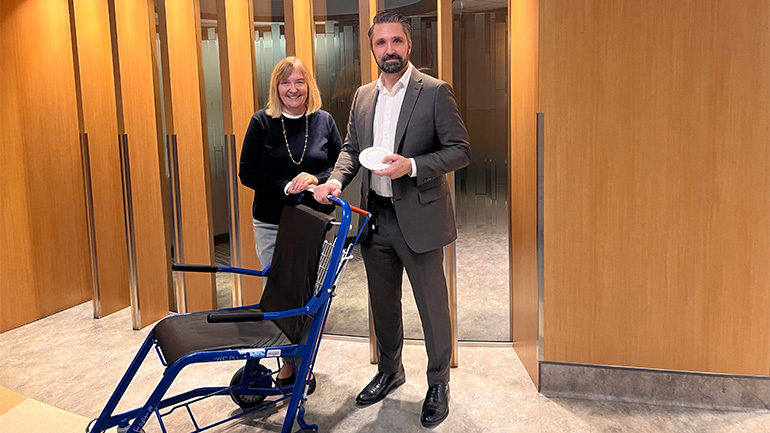Making purchases that prioritize environmental and human health is a critical strategy in reducing the negative impacts of some health-care sector operations. Laboratories are constrained by the requirements of their instrumentation and protocols, yet opportunities exist to follow an environmentally preferable purchasing approach.
Opportunity
One of the primary uses of immunohistochemistry (IHC) is to test patient cancer tissue for the presence or absence of markers that determine therapeutic response to treatment. The instrumentation chosen for this purpose in the lab must be of the utmost quality in order to provide precision testing. However, the issue of hazardous waste in its IHC instruments was a major concern for the Lower Mainland Labs Anatomic Pathology Working Group when it came time to upgrade their equipment.
The instruments use diaminobenzidine, which is a known carcinogen but is unavoidable in the clinical application of IHC. Additional concerns were the cost for proper disposal of hazardous waste and the ergonomic risk for technologists in handling large, heavy containers of this waste.
When the time came to purchase new instrumentation, the group identified the opportunity to reduce environmental and health impacts with the purchase of an alternative product. Using the standard Request for Proposal (RFP) process, the group included questions in the vendor evaluation section about the product’s environmental specifications. It asked about energy and water use, recyclability of the instrument itself, as well as its packaging, life span of the instrument and volume of hazardous waste to be handled. BC Clinical and Support Services (BCCSS), in its oversight of the RFP process, encouraged the inclusion of questions to reveal the environmental impact of vendors’ products. Vendors’ responses to these environmental questions made up five per cent of the weight of the technical component of the RFP.
Benefits
The instrument ultimately selected for purchase will generate more than 13 times less carcinogenic waste than the current instrument — a reduction of over 8,000 litres per year that will not require handling and incineration, thereby reducing the risk of toxic exposure. As well, the containers that collect the hazardous waste are much smaller and at a better height for handling, reducing the acute risk of musculoskeletal injury.
The new IHC instrument, with its better environmental performance, is estimated to save the laboratory nearly $20,000 per year.
Acting for change
Key to the success of an environmentally preferable purchasing approach are the staff who look for and pursue purchases of equipment and supplies that are less harmful. By pursuing their environmental values at work, these leaders create paths that others can follow.
The Lower Mainland Labs Anatomic Pathology Working Group discovered that existing processes could be altered just slightly in ways that create significant benefit, and that financial savings — the business case — tend to be supported by operational leaders.








